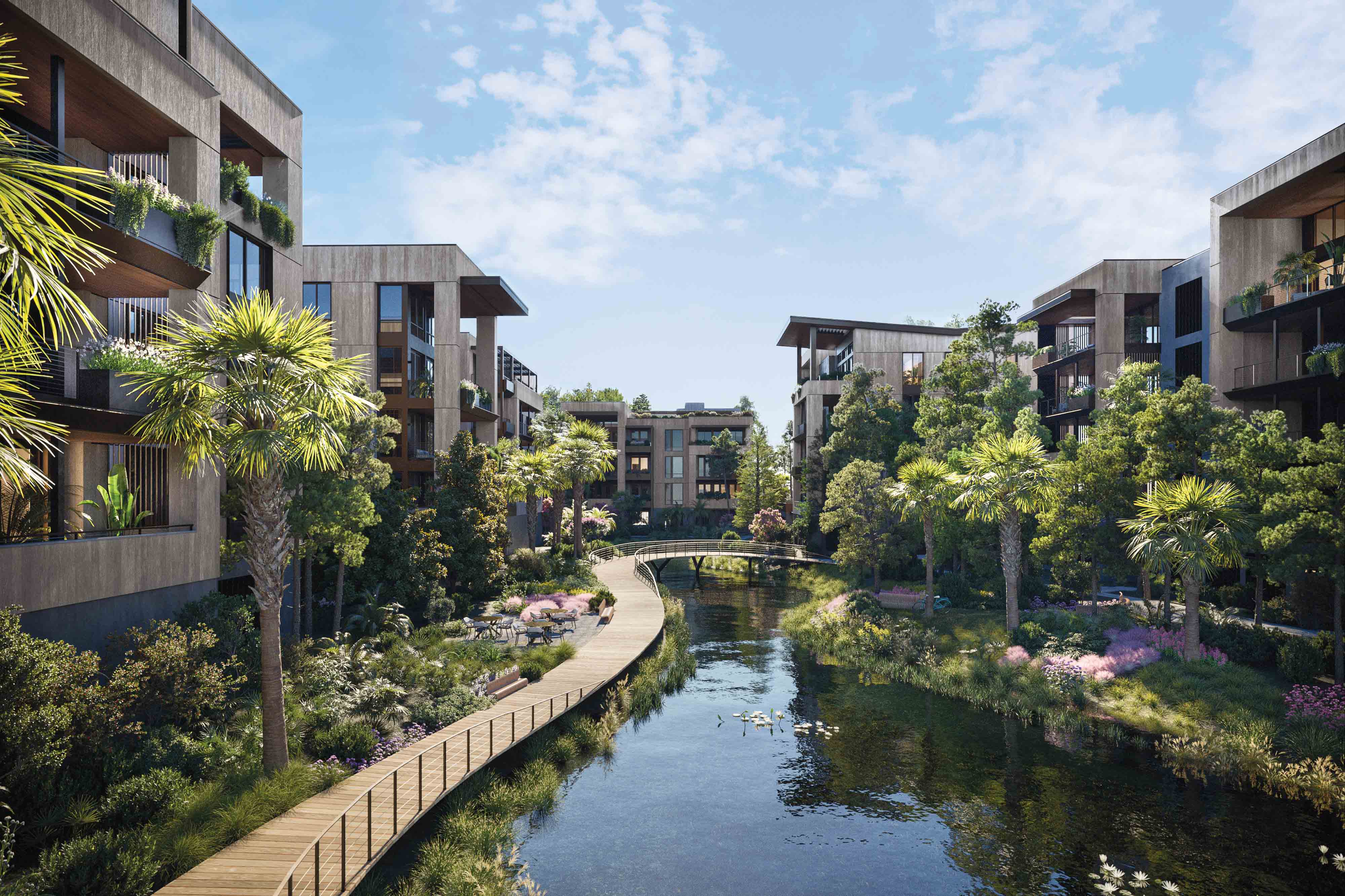Full Circle
Story by Katherine Barry Verano
illustrations by TECMA SOLUTIONS S.p.A.
Kiawah Partners introduces Ocean Pines, elegant new residences nestled between the Atlantic and the Kiawah River, redefining luxury at West Beach
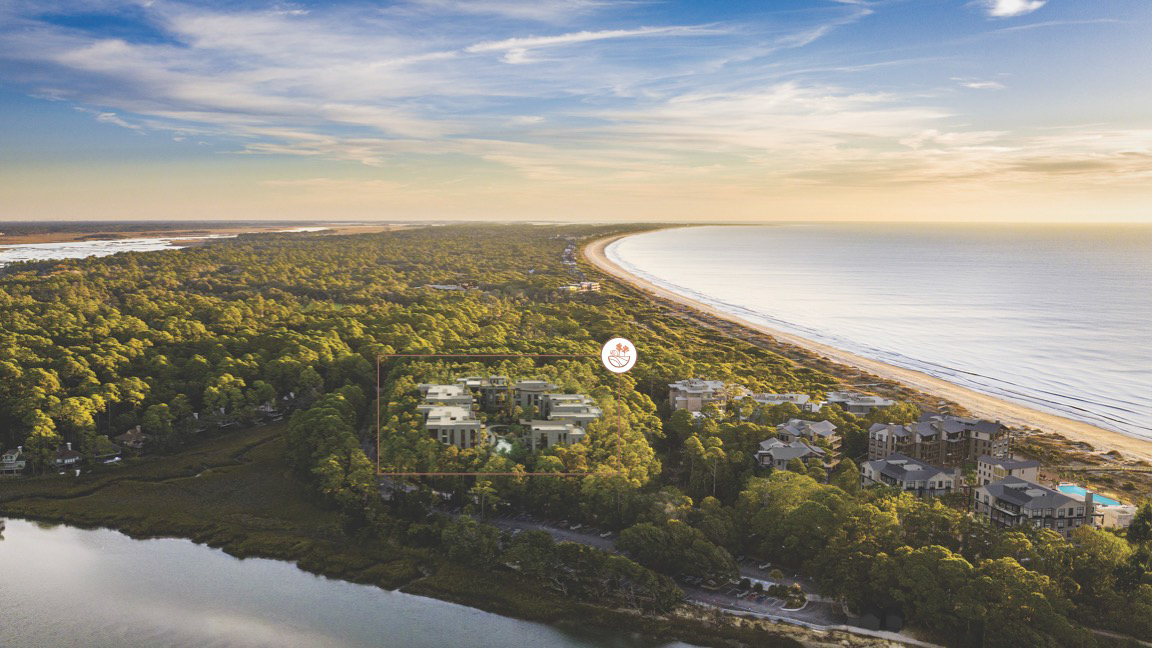
Good things take time. Better things take longer—so the old adage goes. And so it is with Kiawah. Even after half a century of development, this land, shaped by nature and carefully stewarded, continues to evolve, flowing from generation to generation with the same natural beauty and Lowcountry grace that have drawn people to its shores for centuries.
Inevitably, places have to evolve to stay relevant,” muses land planner and longtime Kiawah resident Mark Permar. “The whole notion that a community is planned and developed, and that’s the end…well, that’s not it really. Creating community never truly stops.” It is fitting then, that the evolution of Kiawah has come full circle, back to where it all began. The contemporary story of Kiawah unfolded fifty years ago along the western reaches of the Island, and it is here, amid the dynamic inlets and sparkling shores of West Beach Village, that a new chapter is being written.
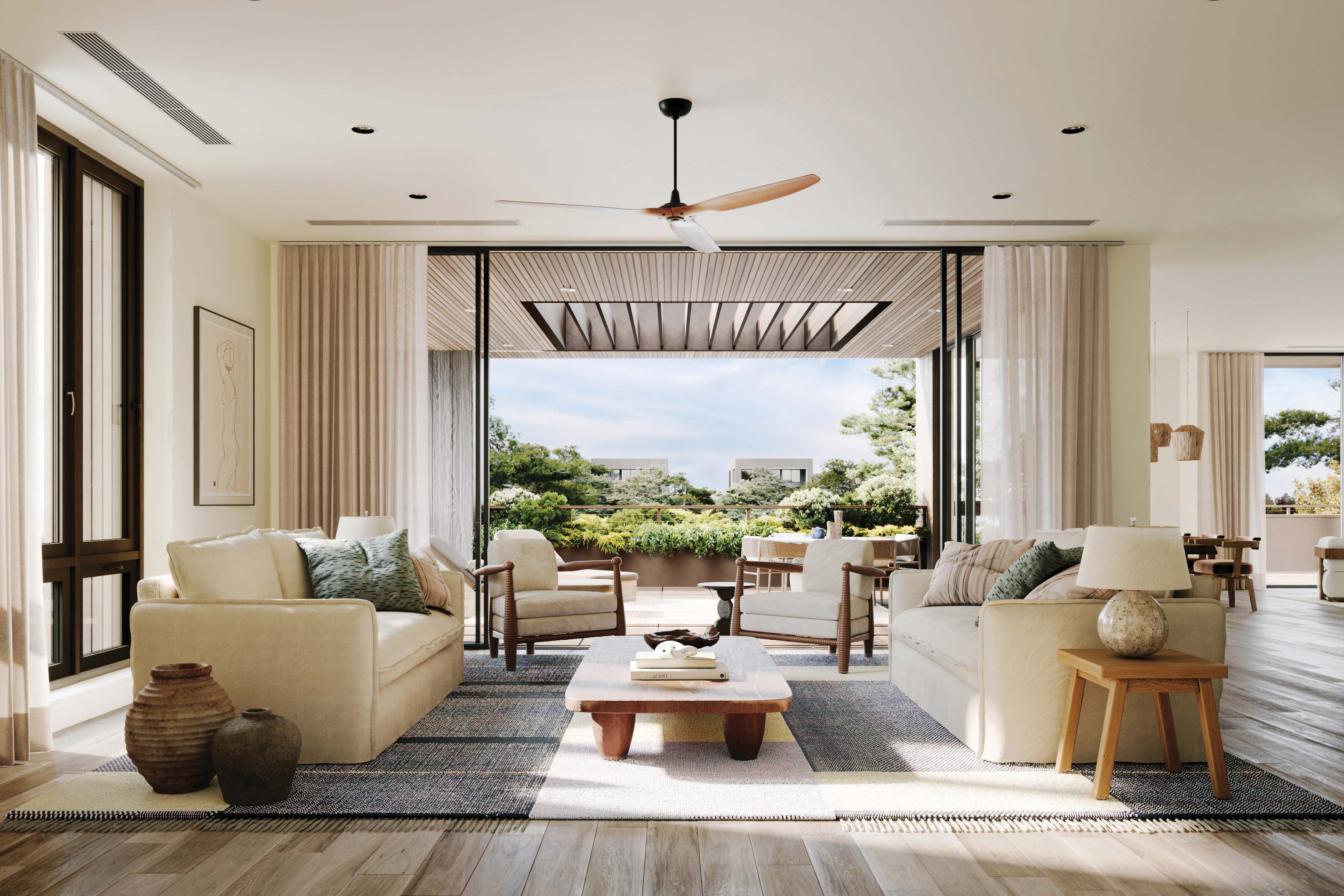 No exploration of the West Beach community would be complete without a look back at its iconic origins. In 1974, the Island’s new owner, Kuwaiti Investment Corporation, hired the Sea Pines Company to guide the development of Kiawah. Their first order of business was a sixteen-month ecological and environmental analysis, from which a comprehensive master plan was born. With respect to natural features, the plan designated certain areas, like West Beach, to be more conducive to more intense land uses. “In the western end, the forest floor was not exaggerated,” recalls Permar. “You could see some subtleties of old dune lines, but in general, the topography and tree cover lent itself well to development. It was simply a matter of reshaping what was already there, not disrupting it.” These site characteristics, plus its proximity to the Kiawah River, the ten-mile beach, and the front of the Island (literally at Kiawah’s front door)—all made it an ideal location for future resort amenities and multi-family dwellings.
No exploration of the West Beach community would be complete without a look back at its iconic origins. In 1974, the Island’s new owner, Kuwaiti Investment Corporation, hired the Sea Pines Company to guide the development of Kiawah. Their first order of business was a sixteen-month ecological and environmental analysis, from which a comprehensive master plan was born. With respect to natural features, the plan designated certain areas, like West Beach, to be more conducive to more intense land uses. “In the western end, the forest floor was not exaggerated,” recalls Permar. “You could see some subtleties of old dune lines, but in general, the topography and tree cover lent itself well to development. It was simply a matter of reshaping what was already there, not disrupting it.” These site characteristics, plus its proximity to the Kiawah River, the ten-mile beach, and the front of the Island (literally at Kiawah’s front door)—all made it an ideal location for future resort amenities and multi-family dwellings.
In 1976, West Beach Village was born. It was the beginning of “what Kiawah Island was to become to the rest of the world,” adds Permar, “because very few had access before.” The Kiawah Island Inn and Marsh Point (now Cougar Point) golf course opened, and real estate sales began. Villas such as Shipwatch, Seascape, and Duneside sprung up along with the Sparrow Pond and Inlet Cove cottages. Beachwalker Park opened the same year as well as a maze of overland trails that connected the resort’s core to the rest of the Island. The jeep safari was a popular way for guests to experience the Island.
The strategic decision to locate the Island’s first phase of development, which stretched from the Kiawah Island Parkway bridge to Sora Rail Road, relied heavily on its walkability. The resort amenities, the hotel, the villas and cottages, and the beach were all within a five-minute walk. “This proximity made it possible for people to easily convene when they wanted, but also go off and do their own thing too,” notes Permar. “No one needed a car because walking or a bike could get you anywhere you wanted to be.”
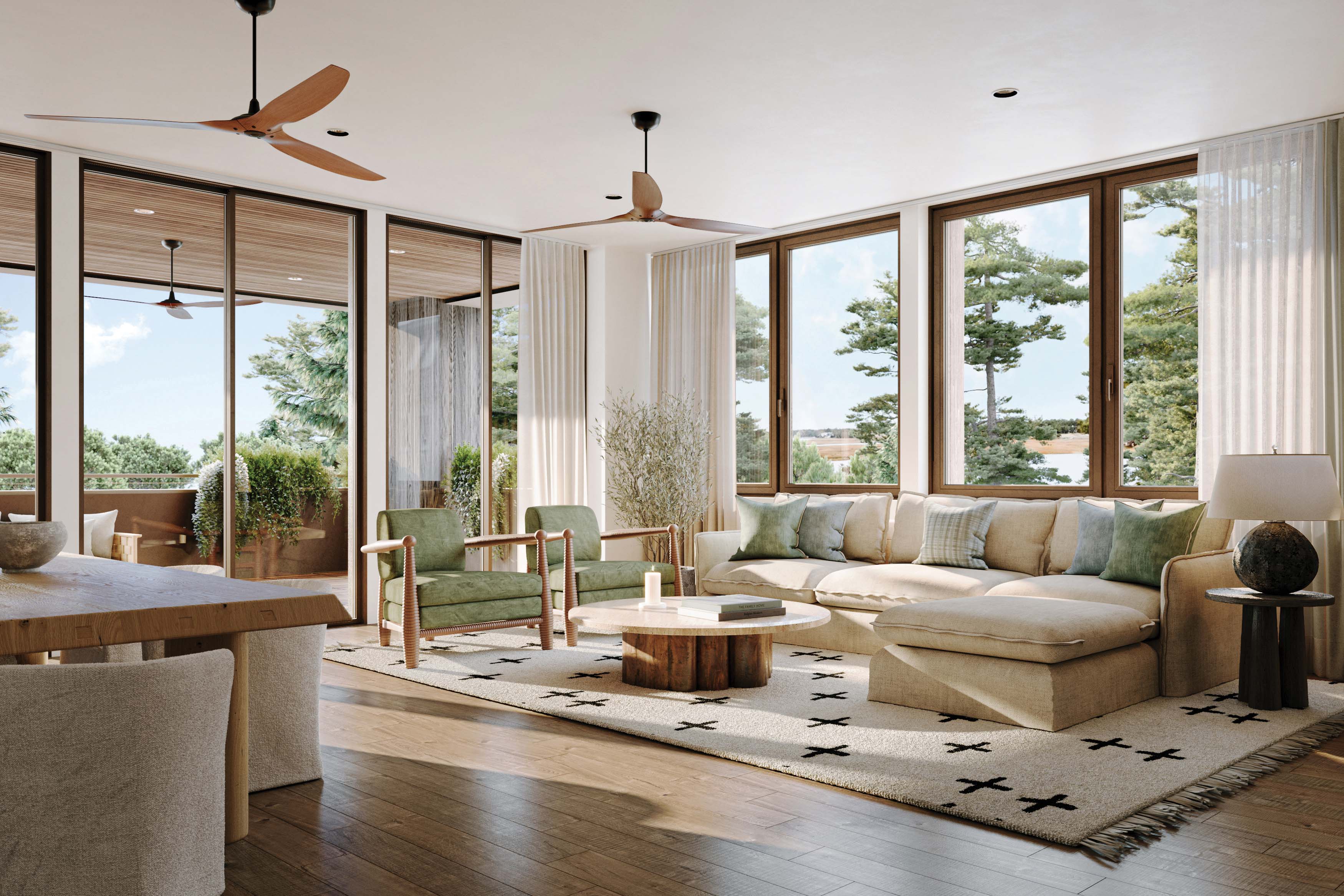
Over the next thirty years, as development moved eastward with a focus on residential neighborhoods and the advent of the private Club, many of the original resort amenities, including the Inn and Straw Market, were demolished to pave the way for West Beach’s second act.
Today, Island stakeholders, including the master developer Kiawah Partners, Kiawah Island Community Association, and Kiawah Island Golf Resort, are breathing new life into the Island’s iconic core. “The continuity of leadership on this effort has been incredibly impactful,” says South Street Partners’ Jordan Phillips. “The team has tremendous institutional knowledge and understands how to create value while remaining true to the legacy of West Beach and of Kiawah itself.”
Kiawah Island Golf Resort led the revitalization effort with the addition of the Robert A.M. Stern-designed West Beach Conference Center and Villa Check-in, the West Beach Pool complex, and the Cougar Point Clubhouse, which opened in 2019. The Community Association has installed extensive landscaping in core West Beach areas, and Kiawah Partners has contributed a new private Club amenity, The Cape Club, and the future Ocean Pines enclave. The Cape and Timbers Kiawah also joined West Beach as the first oceanfront multi-family residences to be built since the 1980s. These new additions not only complete but enhance the vision for West Beach that began way back in 1974.
“We have been anticipating and planning for the revitalization of the west end for years,” says Amanda Mole, Kiawah Partners’ Chief of Architecture and Design. “What was once a more resort-focused, dense plan has been scaled back. Nature still owns the Island; we’re just blending in the most thoughtful way we can.”
And blending in isn’t as easy as it sounds. It takes careful consideration by all involved, including hours of site analysis, significant time in planning and design, and lots of iterations to get it just right. Fortunately, the core characteristics that made West Beach successful early on—walkability, proximity, and nature-led design—still hold true. In fact, the Ocean Pines enclave, which will welcome families in 2026, may even seem familiar. The land use type, the density, and even the material usage are all consistent with the original West Beach designs.
“Harkening back to the early days of Sparrow Pond and Shipwatch, we are aiming for a more natural look and feel in Ocean Pines,” says Mole. The materials are organic and refined, such as wood siding and paneling that will age well over time, muted colors that blend into the surroundings, and integrated plantings that further weave nature into the site. The buildings are sited to best connect to breezes and light patterns and to the site’s natural characteristics, which include a central lagoon and large stands of pines.
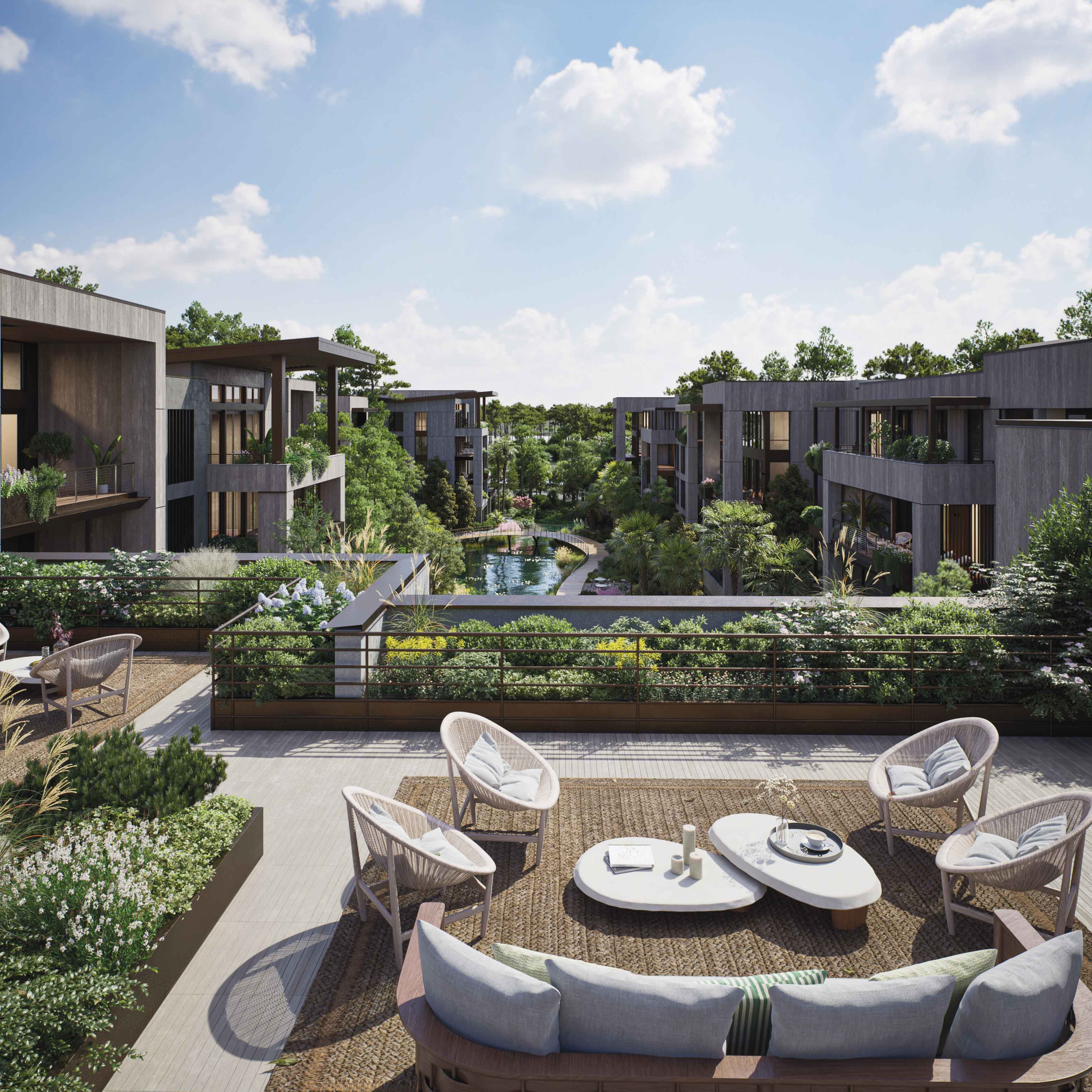 “West Beach was an old timber site, and because of that the West Beach forest is now dominated by tall stands of pines,” adds Mole. “Those pine groves have matured beautifully and play a central role in the site design of Ocean Pines. We have located the buildings to avoid larger stands, which in turn provide grounding to and screening of the structures. In the end, it will seem as though it’s always been there, the same as the balance of the West Beach development.”
“West Beach was an old timber site, and because of that the West Beach forest is now dominated by tall stands of pines,” adds Mole. “Those pine groves have matured beautifully and play a central role in the site design of Ocean Pines. We have located the buildings to avoid larger stands, which in turn provide grounding to and screening of the structures. In the end, it will seem as though it’s always been there, the same as the balance of the West Beach development.”
Sticking to the Designing with Nature playbook and applying lessons learned over the course of fifty years means the fabric of this original Island community remains intact. Its connectivity, walkability, and proximity to everything remains a desirable way of life. It’s a way of life that’s attracting new families with a fresh outlook on the family beach getaway, re-engaging existing owners and guests with new amenities, and adding value across the board for all. “To be a part of the evolution of a community is a truly life-altering moment. To see things go from the ground up—the people, the places, the relationships nurtured, like the landscaping—to maturity…is incredibly special,” notes Permar.
Special indeed. And so, a half-century after the story of West Beach began, this next chapter carries on with renewed focus and energy. It’s a story of community. A story of continuing responsibility. A story with a bright future.




